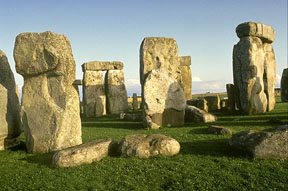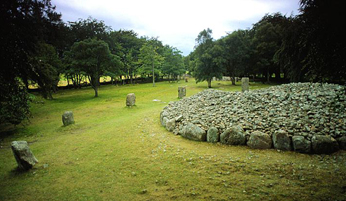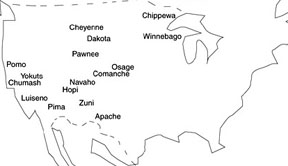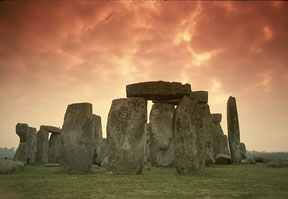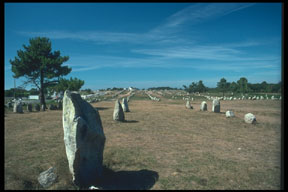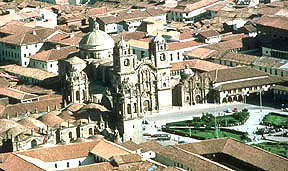Click on image for full size
Windows to the Universe original image
The Newgrange Passage Tomb
The Newgrange tomb is located in County Meath, Ireland (28 miles north of Dublin). It was likely built around 3,200 B.C. by the Neolithic people who lived in Ireland at the time. That means that it is older than the pyramids in Egypt! The tomb was discovered in 1699 and it was excavated and restored a lot between 1962 and 1975.Concern for astronomy cannot be mistaken at this passage tomb in Ireland. An entrance on the southeastern side opens to a 62 feet long passageway leading to a central chamber 20 feet high and three side chambers. For about 2 weeks on either side of the winter solstice, light streams through a roof box located above the entrance passage. This allows light to shine through the length of the passageway, illuminating the entire central chamber which must have been where people were buried. That this could happen by chance is so unlikely that no one doubts that Newgrange was carefully planned and constructed to face sunrise at the midwinter mark.
Midwinter was traditionally seen as the season of death followed by renewal. You see, midwinter day marks the shortest day of the year followed by the lengthening of days and the coming of Spring. If its builders believed in a life after death like most cultures do, it is appropriate that this tomb was constructed with these thoughts in mind.
Many of the stones making up Newgrange are richly decorated, some with symbols that look very much like the Sun. Newgrange is not an observatory, but this building does show that this ancient civilization had not only knowledge of the movement of the Sun, but a deep cultural connection with the movements of the Sun, Moon and stars.







